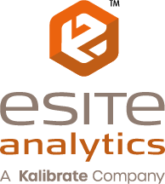
On-site customer surveys are not the best way to gain insights. For more accurate information, use your company’s location-based data.
If you’re looking for a reliable way to collect on-the-ground data about your customers, you may be considering customer intercepts. This survey method puts real people in individual stores, restaurants, clinics or branches to ask customers how they interact with your brand.
What most market research companies won’t tell you is that intercepts:
- Are an expensive way to get subjective data
- Don’t yield the most reliable results
With customer intercept surveys, often the best data capture programs may net only 300 to 400 answers. At a cost of $10 to $15 per intercept.
It’s an expensive way to get subjective data.
The limitations of traditional customer surveys and intercepts
Typically, on-site customer surveys are used to discover why some people leave before making a purchase, and to gain insights that can help convert casual shoppers into buyers. Intercepts rely on field teams to question customers as they enter or leave your locations.
While this method can be more reliable than traditional customer surveys, there are many factors that limit the quality of responses your company can collect:
- The types of people who stop for interviews (often retirees) may not provide a reliable sampling
- Weather and local events can keep people from walking through the door altogether
- Incentives, often a necessity to drive up response rates, can add up quickly and skew the responses
And then there’s the most likely reason your customer intercept surveys could fail:
Many people are simply too busy to devote even a minute of free time to customer surveys, regardless of where and when they take place. Those who do have time or respond to incentives don’t always result in the objective, random sample you need to inform better business decisions.
For more reliable customer insights, turn to your spatial data
Location-based customer data (zip codes, driving behaviors, mailing addresses, workplaces and so on) are far more reliable than most survey results. And it’s easily accessible through mapping software commonly used by real estate departments.
With a tool like eSite’s Trip2Trade mapping software, your company can get far more reliable insights while avoiding a pricey intercept invoice.
Example of spatial data in action
For example, consider a chain of restaurants that generates a lot of business during the weekday lunch hour. It would be highly valuable to know where potential customers are coming from at that time, but lunch breaks are definitely not the time you’d want to bother customers with survey questions.
With access to GIS (or anonymized GPS) data, you see where people are coming from during the lunch hour—most likely work—as well as what neighborhoods they live in. You could then hone in on those locations to learn even more about your existing and potential customers: buying habits, daily commuting patterns, retirement status and more.
The best part? With the latest mapping software, this analysis can be conducted on competitor locations and potential sites, too. All within a matter of seconds.
Next time your marketing director starts talking about customer surveys, suggest using your existing customer data instead. The results are much more reliable and economical.
Photo credit: Felipe Cabrera

